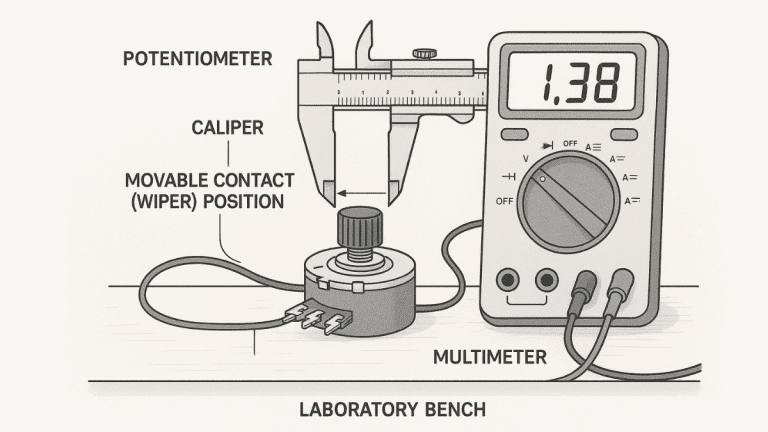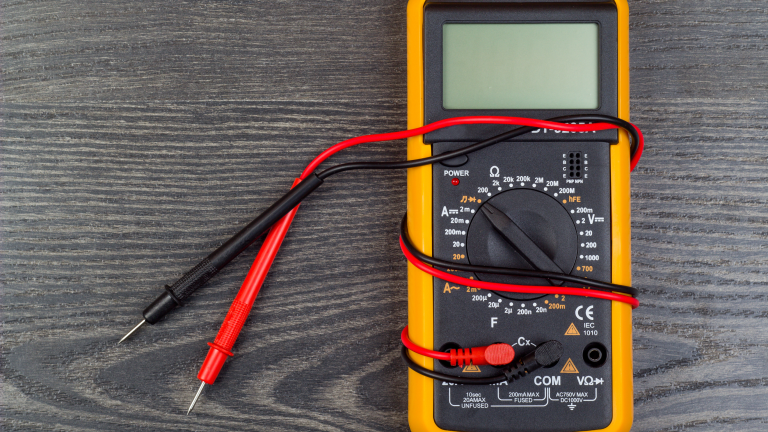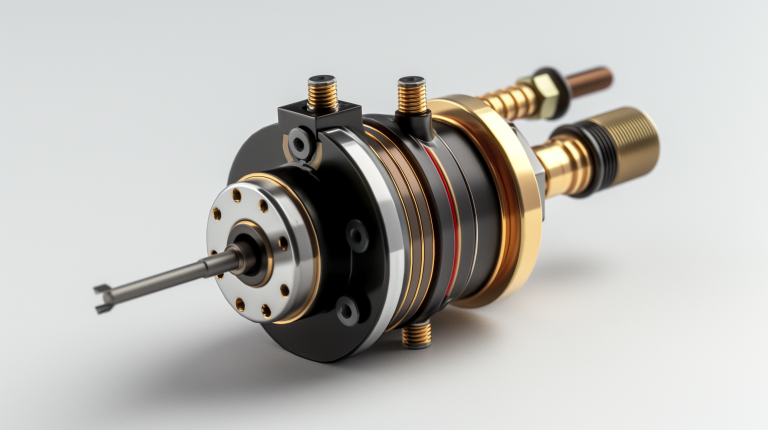
The cycling world is buzzing, and guess what’s at the heart of it all? Power meters! These incredible devices have transformed the way cyclists train and understand their performance. Forget relying solely on gut feeling or heart rate – now, we can dive into the precise world of watts!
This blog post is your ultimate guide to understanding what a power meter is and how it works. Buckle up, get ready to unlock the secrets of power-based training, and take your cycling journey to the next level!
What is a Power Meter?
In the simplest terms, a power meter is an electronic device that tells you how much power you’re generating while cycling. This power is measured in watts, which represent the rate at which energy is being used. Think of it like the horsepower of your car engine – the more watts you produce, the harder you’re working.
Now, why are watts so important for cyclists? Because power is the most accurate and consistent way to measure your effort on the bike. Unlike heart rate, which can be influenced by factors like stress, caffeine, or temperature, power output provides a direct and objective measure of your performance. This makes it incredibly valuable for training, racing, and analyzing your progress.
How Does a Power Meter Work?
Ever wondered how these magical devices actually measure your cycling prowess? The secret lies in tiny components called strain gauges. These incredibly sensitive sensors detect even the slightest force or torque applied to them. When you push on the pedals, the strain gauges within the power meter bend or flex, and this minuscule deformation is translated into an electrical signal.
Now, where do these strain gauges hide on your bike? Well, they can be cleverly integrated into various parts of the drivetrain:
- Cranks: Some power meters are built directly into the crankset, often within the spider, which connects the crank arms to the chainrings.
- Crank Arms: Other power meters attach directly to the crank arms, either on the inside or inside the arm itself.
- Pedals: For those who like to swap bikes frequently, power meter pedals offer a convenient solution with the strain gauges housed inside the pedal axle.
- Hub: While less common nowadays, some power meters reside in the rear hub, measuring the force transmitted through the wheel.
But how do we get from a tiny bend in a strain gauge to a glorious wattage number on your cycling computer? Here’s where the magic of physics and engineering comes in. The power meter combines the strain gauge measurement (force) with the angular velocity of the component (how fast it’s rotating). This calculation, involving torque and rotational speed, provides the power output in watts. It’s a symphony of mechanics and electronics working together to quantify your cycling strength!
Types of Power Meters
Just like there are different types of bikes and riders, there’s a diverse world of power meters to explore! Let’s break down the most common types, each with its own pros and cons:
Crank-Based Power Meters:
These are the workhorses of the power meter world, often considered the gold standard for accuracy. Crank-based power meters typically measure power at the spider, the heart of the crankset where the crank arms meet. This central location offers excellent accuracy as it captures force from both legs. You’ll find them in both single-sided (measuring only one leg’s power and doubling it) and dual-sided options (providing independent readings for each leg). Popular brands like SRAM/Quarq, FSA PowerBox, and SRM are known for their crank-based power meters.
Advantages:
- High accuracy
- Single-sided and dual-sided options available
Disadvantages:
- More expensive than other types
- Compatibility issues with certain bike frames
Crank Arm Power Meters:
Want to dip your toes into the world of watts without breaking the bank? Crank arm power meters are your go-to! These affordable options measure power through a strain gauge attached to the inside of the left crank arm. Brands like Stages and 4iiii dominate this category, offering kits for a wide range of crank arm models. You can either send your existing crank arm to be fitted with a power meter or purchase a new one pre-installed.
Advantages:
- Most affordable option
- Easy to install
- Options to send in your crank arm or buy a pre-installed one
Disadvantages:
- Less accurate than other types
- Single-sided measurement only
- Potential frame clearance issues
Spindle-Based Power Meters
These stealthy power meters hide inside the crank’s axle, offering a sleek and protected design. The spindle-based power meters capture power from the left leg and rely on software to calculate the total power output. They’re known for their longer battery life due to the increased space within the axle. Rotor’s 2INpower cranks cleverly combine a spindle power meter with an additional sensor in the drive-side crankarm to provide true dual-leg measurement.
Advantages:
- Relatively inexpensive
- Easy installation
- Longer battery life
Disadvantages:
- Single-sided measurement only (except Rotor 2INpower)
- Limited compatibility with cranksets
Pedal-Based Power Meters
Want the ultimate flexibility? Pedal-based power meters let you easily transfer your power meter between bikes! These innovative systems house strain gauges inside the pedal axle or pedal body. Leading brands like Garmin and SRM offer power meter pedals for various cycling disciplines, with options for single-sided or dual-sided measurement.
Advantages:
- Easy to swap between different bikes
- Dual-sided measurement available
Disadvantages:
- Can be expensive, especially for dual-sided models
- Increased stack height due to the added sensors
- Installation requires careful attention to axle orientation for accurate readings
Benefits of Using a Power Meter
Ready to unlock the true potential of your cycling performance? Here are some incredible benefits of incorporating a power meter into your training:
- Accurate Measurement of Effort: Power meters provide an objective measurement of your work rate, taking the guesswork out of training. Say goodbye to relying solely on heart rate or perceived exertion, which can be influenced by numerous external factors. With a power meter, you know exactly how hard you are working, regardless of the weather, fatigue, or other variables.
- Precise Training Zones: Forget generic training zones based on percentages of your maximum heart rate! Power meters allow you to establish precise training zones tailored to your individual physiology and goals. This granular control enables you to structure your workouts effectively, target specific energy systems, and optimize your training adaptations.
- Effective Pacing: Whether you’re tackling a time trial, a grueling climb, or an intense interval session, power meters are your secret weapon for maintaining consistent effort and avoiding the dreaded “blow-up.” By monitoring your power output in real-time, you can avoid starting too hard and ensure you have enough energy to finish strong.
- Monitoring Progress: Numbers don’t lie! A power meter allows you to track your fitness gains over time with concrete data. Seeing those watts increase is incredibly motivating and provides objective evidence of your progress. You can analyze your power data to identify areas for improvement, fine-tune your training plan, and celebrate your hard-earned gains.
- Identifying Imbalances: Dual-sided power meters can reveal discrepancies in power output between your left and right legs. This valuable insight can help you address muscular imbalances, improve pedaling efficiency, and potentially prevent injuries.
- Injury Prevention: By understanding your power output and training load, you can better manage your training stress and reduce the risk of overuse injuries. Power meters provide a quantitative measure of your effort, allowing you to avoid pushing too hard too soon and gradually increase your training intensity.
Choosing the Right Power Meter
Finding the perfect power meter is like finding the perfect bike – it’s a personal journey! Here are some key factors to consider when making your decision:
- Budget: Power meters range in price from a few hundred dollars to well over a thousand. Crank arm power meters are generally the most affordable, while crank-based and pedal-based systems tend to be more expensive, especially for dual-sided options. Consider your budget and how much you’re willing to invest in this valuable training tool.
- Compatibility: Before you fall in love with a shiny new power meter, make sure it plays well with your bike components. Crank-based power meters require compatibility with your crankset, while crank arm power meters need to match your existing crank arms. Pedal-based systems offer the most flexibility, fitting virtually any bike. Check the manufacturer’s specifications to ensure compatibility before making a purchase.
- Features: Power meters offer a range of features beyond basic power measurement. Single-sided meters provide an estimate of total power by measuring one leg and doubling it, while dual-sided meters offer more accurate data by measuring each leg independently. Some advanced models provide pedal stroke analysis, offering insights into your pedaling technique. Most modern power meters utilize ANT+ and Bluetooth technology to transmit data to cycling computers or smartphones.
- Number of Bikes: If you frequently swap between bikes, pedal-based power meters offer the easiest transferability. Simply unclip the pedals from one bike and attach them to another. This can be a cost-effective solution if you want power data on multiple bikes without purchasing multiple power meters.
Conclusion
Power meters have revolutionized cycling training, providing cyclists of all levels with objective data to understand their effort and optimize their performance. These ingenious devices, utilizing strain gauges to measure the force applied through pedaling, offer numerous benefits, ranging from accurate measurement of effort and precise training zones to effective pacing and injury prevention. By understanding how power meters work and the different types available—crank-based, crank arm, pedal-based, and spindle-based— riders can make informed decisions to choose the best system for their needs and budget. Incorporating power data into training plans empowers cyclists to train smarter, maximize their potential, and achieve their cycling goals while minimizing the risk of injuries.


